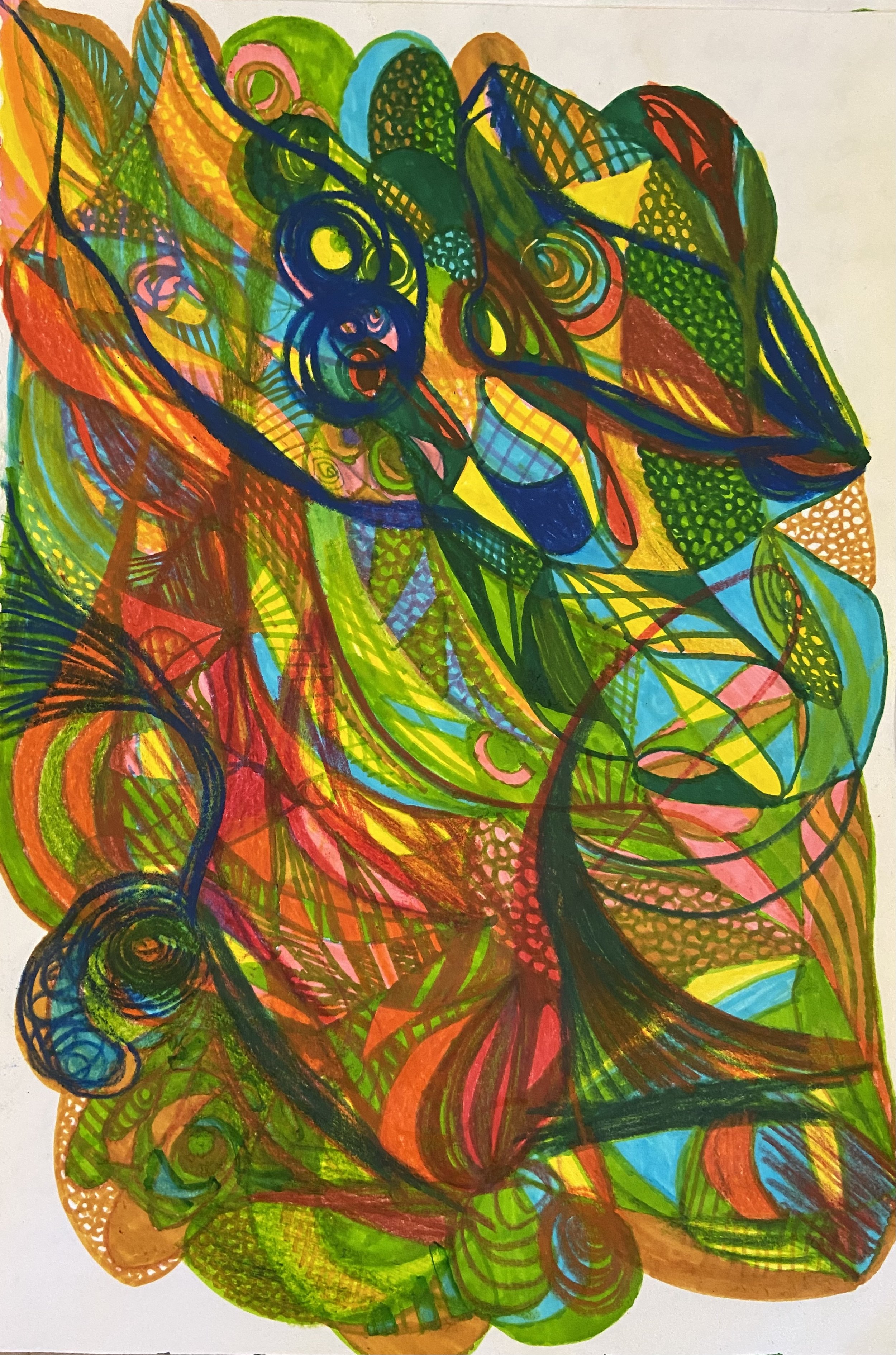Release through art therapy
A friend recently told me they have trouble detaching from their rational mind when they do art therapy.
If we remain trapped in our rational mind, a wealth of possibility is withheld from us. Our rational mind has a tendency of judging and suppressing the expression that begs to escape us. With so much reason to shield ourselves in our daily interactions with people, giving ourselves permission to release is paramount.
What is art therapy?
I define art therapy as the act of freely expressing yourself through visual media, including drawing, painting and modelling. Instead of controlling the artwork, art therapy liberates our intuition, helping us actualise the repressed aspects of the self. I use “intuitive drawing” and “expressive arts” as synonyms for art therapy.
Stuck inside my head
I remember doing art therapy during a psychotherapy consultation at age 18. At the time, I’d been working on my technical drawing skills for my higher school certificate visual arts major. Such preparation requires an ample amount of concentration and precision. Given my immersion in learning technical drawing, doing art therapy was a shock to my system. Seeing the wild, unrefined “scribble” I produced almost repulsed me. At the end of one psychotherapy session, the psychologist asked how I felt when I looked at my intuitive drawings. I told her, looking at them made me feel uncomfortable.
There are layers to this discomfort. On one level, I was embarrassed to be “scribbling” amid furthering my technical drawing skills. Digging deeper, I realise I was also uncomfortable with facing myself. I was afraid to look at the aches and yearnings brewing beneath the surface of my survival-mode self. I didn’t want to be de-railed by the chaos that lurks within. I wanted to stay within the confines of my rational mind, where I felt safe and in control.
Letting go
How do we get past our rational mind and lose ourselves in the art making process? I’ve met lots of people who find it difficult to dive into art therapy straight away. The tendency to judge the appearance of the visual catharsis trumps the visceral sensation of releasing what our soul wants to express. To overcome such barriers, I recommend pulling out your journal and writing down every niggly sensation that is stopping you from releasing in a stream of consciousness style.
Here are some questions that can help guide your journaling:
• Why do you have trouble letting go?
• Why are you burdened by the way it looks?
• Why don’t you want to give yourself space to be raw?
• What are you afraid will happen if you let go?
• Are you curious to see what happens if you do?
No one needs to read what you write in your journal. So, don’t be afraid to be 100% honest in your journaling. It will help you relax and better understand yourself.
Move your body
Another way we can relinquish the trappings of our rational mind is through exercise. Whether you enjoy dance, cross country or team sports, exercise calls us to be aware of our physical body and present surroundings. Physically exerting ourselves has been found to make us less likely to overthink. We’ve generated feel-good endorphins and are ready to move throughout our day with renewed presence. If you’re feeling restless or anxious while doing art therapy, it’s a good sign you’ll feel better by doing some exercise beforehand.
Break from devices
Maybe you don’t have a surplus of energy you need to expend through exercise. Or perhaps you’re not scared of expressing your true colours. Yet, there’s still something that impedes your willingness to release…
Could it be your attachment to your phone? If your phone is sitting next to you, are you prone to constantly checking your notifications? Mobile devices are notorious for being a source of distraction. If you find that your phone interrupts you during art therapy, take a break. Put your phone in another room or completely switch it off. Having “digital free” breaks is so important for our concentration, clarity and wellbeing.
Supporting yourself through the process
So, you’ve done a stream of consciousness journal entry about the inner vices which hold you back, have exercised and are taking a break from your phone. Ready to do art therapy?
Art therapy is a simple action. Gather the materials you want to use and play with them however you please. Use the colours that call out to you and move them across the page in whatever way feels right. There’s no rule on what you can and can’t express. Put your rational mind in the back seat and let your intuition take precedence. If you find yourself fixating on the subjective attractiveness of the artwork, gently remind yourself that art therapy is not about how the artwork looks or the state of being technically perfect. Art therapy is a vehicle for self-liberation. Playing your favourite music and drawing beside a loved one can help you feel more comfortable in the process.
Paying attention to how we feel before, during and after art therapy helps us become more aware of ourselves. We unearth our aches, yearnings and connection to the broader spiritual reality. Giving ourselves permission to release through art therapy yields so much uncharted potential.
Are you willing to explore it?


